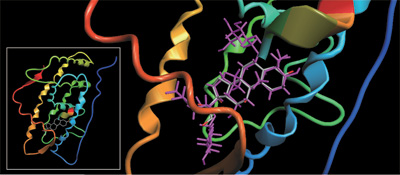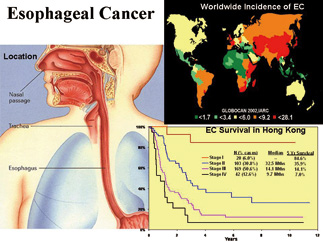|
|

PI: Prof Paul Chu (CityU)
Plasma immersion ion implantation and deposition (PIII&D) is a versatile technique used for modifying surface properties of materials and industrial components. Prof. Paul Chu and his coworkers at City University of Hong Kong designed and built the 1st generation PIII&D equipment in 1996. This equipment has supported more than 40 research projects involving researchers from about 80 universities, institutions and companies from all over the world. The current award is to acquire a new and up-to-date PIII&D machine to replace the old instrument. The new machine will incorporate state-of-the-art technologies, thus enabling our research staff, local and international users to continue their cutting-edge research studies. |
|
| |

PI: Prof Tai-chu Lau (CityU)
Green chemistry is defined as the design of chemical products and processes that reduce or eliminate the use and generation of hazardous substances. Prof. Tai-chu Lau and his coworkers at City University of Hong Kong will establish an interdisciplinary research program to stimulate the development of green chemistry and technology in Hong Kong. They will focus on green catalytic oxidation chemistry and technology, which is a key technology for converting petroleum-based materials to a wide variety of useful chemicals. Their goal is to develop processes that will operate at room temperature, using environmentally benign reagents such as hydrogen peroxide, oxygen and water, rather than toxic solvents.
|
|
| |

PI: Prof Ricky NS Wong (HKBU)
Ginseng has long been regarded in the Asian countries as the "all-healing" medicine. Its general tonic and specific therapeutic effects have been well documented. However, the mechanisms responsible for such effects are not well understood, although some earlier studies by the principal investigator and his coworkers suggest that ginseng may affect the action of specific hormones. Part of the problem is that there are over 30 chemically active ingredients in ginseng, known as ginsenosides. The objective of the present research is to perform a comprehensive study of these ginsenosides, determining how these chemicals exert their biological effects on hormone activity and eventually developing a solid foundation for ginseng-based therapeutics.
 |
| Schematics showing the ligand binding domain(LBD) of the glucocorticoid receptor(GR) protein, with a Dex ligand(in grey) inside the domain. An Rg1 molecule(in purple) is shown superimposed on Dex Inset shows the LBD relative to the entire GR. |
|
|
| |

PI: Prof David W Faure (CUHK)
The West River is a principal waterway linking the provinces of Yunnan, Guangxi, Guizhou and Guangdong. During the Ming and the Qing dynasties, large portions of these provinces were transformed from regimes controlled by local chieftains (known as tusi) into administrative districts placed under county magistrates. This transformation had profound impact on native society. Investigators from the Chinese University of Hong Kong, the Hong Kong University of Science and Technology, and the Sun Yatsen University in Guangzhou will jointly explore this transformation, by studying the remains of temples and ancestral halls, steles, genealogies, land documents, religious records and rituals that local people still perform. They will look for markers of cultural changes, often associated with religious ritual performance, the integration of the locality into the Chinese state, and hence the variation of local cultures at specific historical times.
|
|
| |

PI: Prof Robert SY Li (CUHK)
Data forwarding through the Internet is by store-and-forward mechanism (i.e., copying). Simple copying may be the most natural way to forward a message, but the widely applicable mechanism of network coding is more efficient. Network coding achieves maximal bit rate, minimal latency, and minimal energy consumption in assorted wireless networks, peer-to-peer content distribution, and other forms of communications. This primary objective of this project is to investigate the principles of network coding for reliable network communications and for application to IP Television.
|
|
| |

PI: Prof. Zhenguo Wu (HKUST )
Protein kinases are a family of enzymes responsible for adding phosphate group(s) to other cellular proteins. This important biochemical process is known as phosphorylation. Mutations in certain protein kinases have been linked to several human diseases including cancers. Currently, 518 protein kinases have been identified in both the human and mouse genomes. Although many kinases have been characterized in the past, a systematic study of all protein kinases involved in cell growth and differentiation is still lacking. In this project, Prof. Zhenguo Wu and his coworkers at Hong Kong University of Science and Technology plan to examine the functions of all 518 protein kinases using an RNA interference (RNAi)-based screening method. RNAi, the discovery of which culminated in a Nobel Prize in 2006, is a powerful approach to shut down specific genes in cells. Two cell models, one involving neuronal cells and the other skeletal muscle cells, will be employed for our study. This study should generate a more comprehensive view of key protein kinases involved in cell growth and differentiation and provide new targets for development of effective drugs.
|
|
| |

 |
PI: Prof. Maria Li Lung (HKUST)
Esophageal Carcinoma (EC) is a cancer whose development is associated with dietary factors, eating/drinking habits, and hereditary risk. It occurs with the highest frequency in parts of Northern China with fatality rate of nearly 90%. In Hong Kong, this cancer is usually not diagnosed until quite late in its progression, making it difficult to treat effectively. New diagnostic markers and treatment options are required to improve survival chances for EC patients. This award provides the funds to establish the first Esophageal Carcinoma Research Center (ECRC) in Hong Kong, consisting of faculty from four universities, who have complementary expertise in various areas of basic and clinical EC research. Prof. Maria Li Lung and her coworkers plan to determine the molecular genetic basis of sporadic EC and identify genomic regions associated with hereditary EC in high-risk Northern China. They will establish models for normal esophageal epithelial cell lines and perform studies to identify key genes involved in EC development. Further investigations will identify specific genetic markers for improved diagnosis and prognosis of EC, as well as develop predictive model for its responsiveness toward chemo-radiotherapy and other treatment options. Ultimately, these studies are expected to improve treatment outcomes for afflicted EC patients.
|
|
| |

PI:Prof. Irene OL Ng (HKU)
Liver cancer is a major malignancy worldwide and is particularly prevalent in Asia, including Hong Kong. Development of liver cancer is a known to be a multi-step process. Prof. Irene Ng and her coworkers at the University of Hong Kong plan to examine the genetic and molecular alterations in human tissue samples and mouse models at different stages of the diseases. Studies examining the role of hepatitis B virus will be included as well. In addition, the research will attempt to unravel how signaling in abnormal cells drives the growth of liver cancer, including activities in critical genes.
|
|
| |

PI: Prof. Che Ting Chan (HKUST)
This research program involves the collaboration between theorists and experimentalists to explore the physical properties of a new generation of artificial materials that can control light. Prof. Che Ting Chan and his coworkers at the Hong Kong University of Science and Technology plan to use a combination of special structure-induced resonance, combined with intrinsic material resonance (called "plasmon") to control light. Such resonance structures can in principle give us many interesting phenomena. For example, a flat lens may be fabricated to achieve very high resolution. One can even control thermal radiation. Some designs can reduce light scattering to the point that an object appears to be invisible. This research, if successful, provides an excellent example of the "materials-by-design" approach, in which new materials are purposely designed for specific applications.
|
|
| |

PI: Prof Dan Yang (HKU)
Naturally occurring proteins and peptides play an essential role in biological systems, functioning as enzymes, antibodies, hormones, ligands and receptors. However, the use of proteins and peptides as drugs has been hampered by their poor absorption and stability. Therefore, the search for peptidomimetics, molecules that mimic the functions of natural peptides and proteins with better stability and availability, is not only of great intellectual challenge, but also of practical relevance. In this group research project, investigators at the University of Hong Kong plan to take an interdisciplinary approach to explore the potential of aminoxy acids, a class of unnatural amino acids, as building blocks of peptidomimetics in developing anti-cancer and anti-viral agents, synthetic ion channels, and biomaterials for drug delivery, wound healing and tissue engineering.
|
|
|
|
|